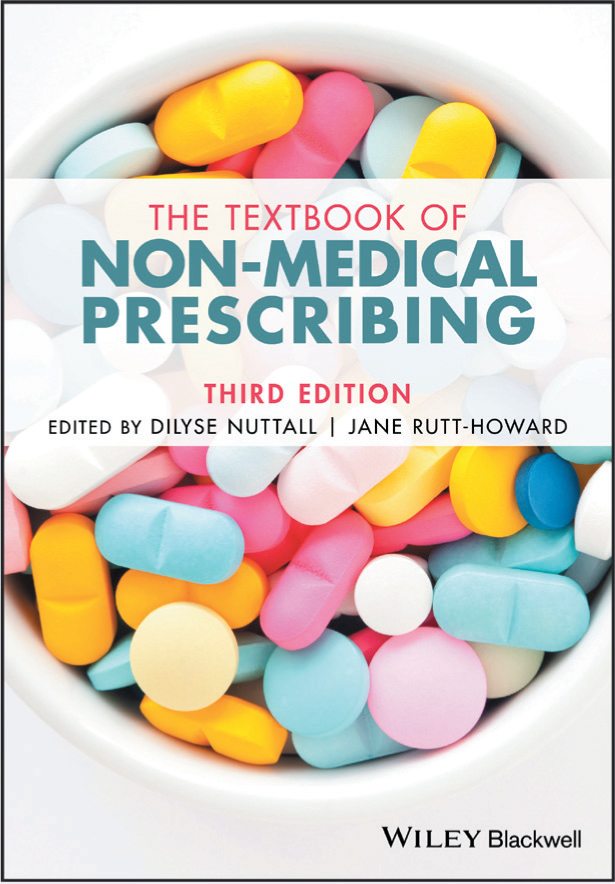The Textbook of Non-Medical Prescribing (ThirdEdition)

The comprehensive overview to non-medical prescribing, The Textbook of Non-Medical Prescribing (Third Edition), provides readers with the key principles, knowledge and skills that underpin prescribing practice. The book is written and edited by experts within the field of prescribing, including both nurses and pharmacists. It is easy to read and appears relevant to both qualified and student non-medical prescribers. There are also elements of the book that would be applicable to undergraduate students on appropriate healthcare courses.
Whilst the book focuses primarily on non-medical prescribing within the UK, there are themes that would be pertinent to both qualified and student prescribers around the world.
The book consists of nine chapters with a selection of patient and health professional case studies. The chapters focus on non-medical prescribing within the current UK health service, the influences on prescribing, the underpinning clinical knowledge and skills, the importance of the multi-disciplinary team and the development of non-medical prescribing skills. Each chapter is based around four core themes – public health, social and cultural issues, prescribing competencies and continuing professional development – all of which are paramount to safe and effective prescribing practice. The theme of ‘prescribing competencies' links directly to the Competency Framework for all Prescribers, which provides the foundation for contemporary prescribing practice. The activities within each chapter and the included case studies provide context for the reader and allow for the translation of theory into practice. Helpfully, there is also a link to a companion website, which provides further material in order to enrich and develop the learning process for the reader.
The content list provides an overview of the chapter titles and sections, and the ‘chapter and content’ section provides a summary of each chapter, which gives a little more context for the reader, making it easier to navigate the text.
The chapters themselves are well laid out, using sectional headings, activity boxes and diagrams in order to break up large sections of text. The language used is professional without being overly complicated.
In Chapter 1: Prescribing in Context, I do feel that the section on page 21 entitled V300 independent/supplementary nurse prescribers may appear more inclusive if changed to include ‘midwife prescribers’, as although midwives are referred to in the text itself, it is not clear from the title of this section. However, the text does stipulate that the term ‘nursing’ is used to refer to nurses, midwives and health visitors collectively.
Whilst Chapter 7: Clinical Skills, provides an overview of the physical assessment process; more experienced non-medical prescribers may benefit from sourcing further texts that provide a more detailed and in-depth approach to this section.
Overall, this is a well-written, insightful and highly relevant prescribing textbook, which provides key information for student and qualified non-medical prescribers. The content has been updated from previous editions and includes recent legislative changes regarding paramedic non-medical prescribers. The book provides a detailed insight into contemporary prescribing practice and should be a key text for all non-medical prescribing courses.


